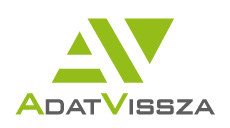Raid data recovery | Server data recovery | NAS data recovery
The Raid systems were developed especially for data loss protection. but catastrophic failure could happen with complex systems.
RAID-arrays usually tolerate, if a drive fails, without being affected regarding the availability of servers on a network.
However, if more than one drive get damaged, out of work, or one-two drivers „fall out” of an array, could cause a catastrophic situation for the company, and other companies may also be affected. Security and confidentiality of the data in RAID systems is especially important to us.
Confidentiality of data management
In the case of each RAID data recovery which is received by us, we attach high priority to this, because we know and we understand that for companies it is essential. Such as a database or more Web-based interface, which is located in RAID array.
Data recovery prices
What kind of RAID arrays backup are being created?
- RAID 0
- RAID 1
- RAID 3
- RAID 4
- RAID 5
- RAID 6
- RAID 0+1
- RAID 10
- RAID 50
- RAID 51
Winchester types
- RAID 0
- RAID 1
- RAID 3
- RAID 4
- RAID 5
- RAID 6
- RAID 0+1
- RAID 10
- RAID 50
- RAID 51
Even the best configured systems could also fail:
- Damaged, or lost Raid configuration
- Refreshing of unsuccesful softver or operation system
- The drive does not do Booting – missing or deleted file/folder
- Inaccessible drive
- Sector errors (Bad Sector)
- Clicking drive
- Faulty RAID controllers, control
- Damaged stripping
- Incorrectly rebuilt RAID
- Formatted drive
- More than one hard disk crash/failure
- Fire/flood hazard
- Random media replacement
- Accidental reformatting on the whole raid array
- Lost series configuration
In the case of a RAID server failure occurred, do not panic! shut down the server and turn off the system!
- If the raid is uncertain, do not try to start again, because it can cause damage to the array!
- If an unusual noise is heard from the drive, stop it immediately!
- If it did not happen, label status of the drives in the RAID!
- Drivers should be numbered, starting with number 0. For example: if an array is 5 drives , the numbering would look like this: 0-4!
- Do not run volume repair or defragment, on the suspected bad drives!
- Do not change the drive to another one, which previously was part of the raid system!
- If you are uncertain regarding the operation of RAID/ server, disregard all repairs!
Important notice! If you experience some kind of uncommon disorder of the raid array or server, immediately shut down the system/server, and turn off the computer, and unplug the 220V network connector. All this in order to avoid further damage. There are free data recovery softwares available you can have access to. Using them without any experience could lead to more severe irreversible failures on the defected disk.
Ask for asssistance, call now! NON-STOP availability: +36 30 370 73 07 any time of the day.
